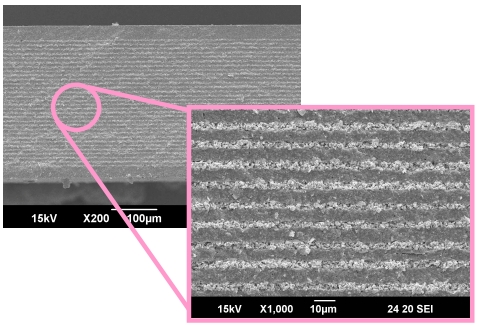Japanese Successfully Develop 100-Cell Multi-Layer Ceramic Battery
Announcing technology in a similar vein to the long-awaited EEstor electrical storage device, developers Namics Corporation of Niigata, Japan claim to have developed the world’s first 100-cell multi-layered ceramic rechargeable battery based on a patent applied for with IOMTechnology Corporation.
The structured of this ceramic battery consists of an inner electrode, the active material and a solid electrolyte. This use of solid materials rather than liquids means that the battery is not going to leak dangerous chemicals which then could cause damage or start a fire. The ceramic design also is resistant to high temperatures since the manufacturing process itself requires it to be fired in temperatures between 800 and 1000 degrees.
In addition to the safety benefits, the developers are also touting a high capacity for energy storage, as well as a manufacturing process that mirrors the MLCC (Multi Layer Ceramic Capacitor) production method. The latter suggests that this is no pie-in-the-sky technology, but one that can be put into production using existing methods.
The relevance to future EV and hybrid owners is simple: Here is a battery technology that could be implemented relatively quickly that combines both safety gains and performance gains in a single package. The combination of these three benefits surely make this a technology to watch.
Sources: Iwate Nippo (Japanese-language), Namics Corporation (English)




